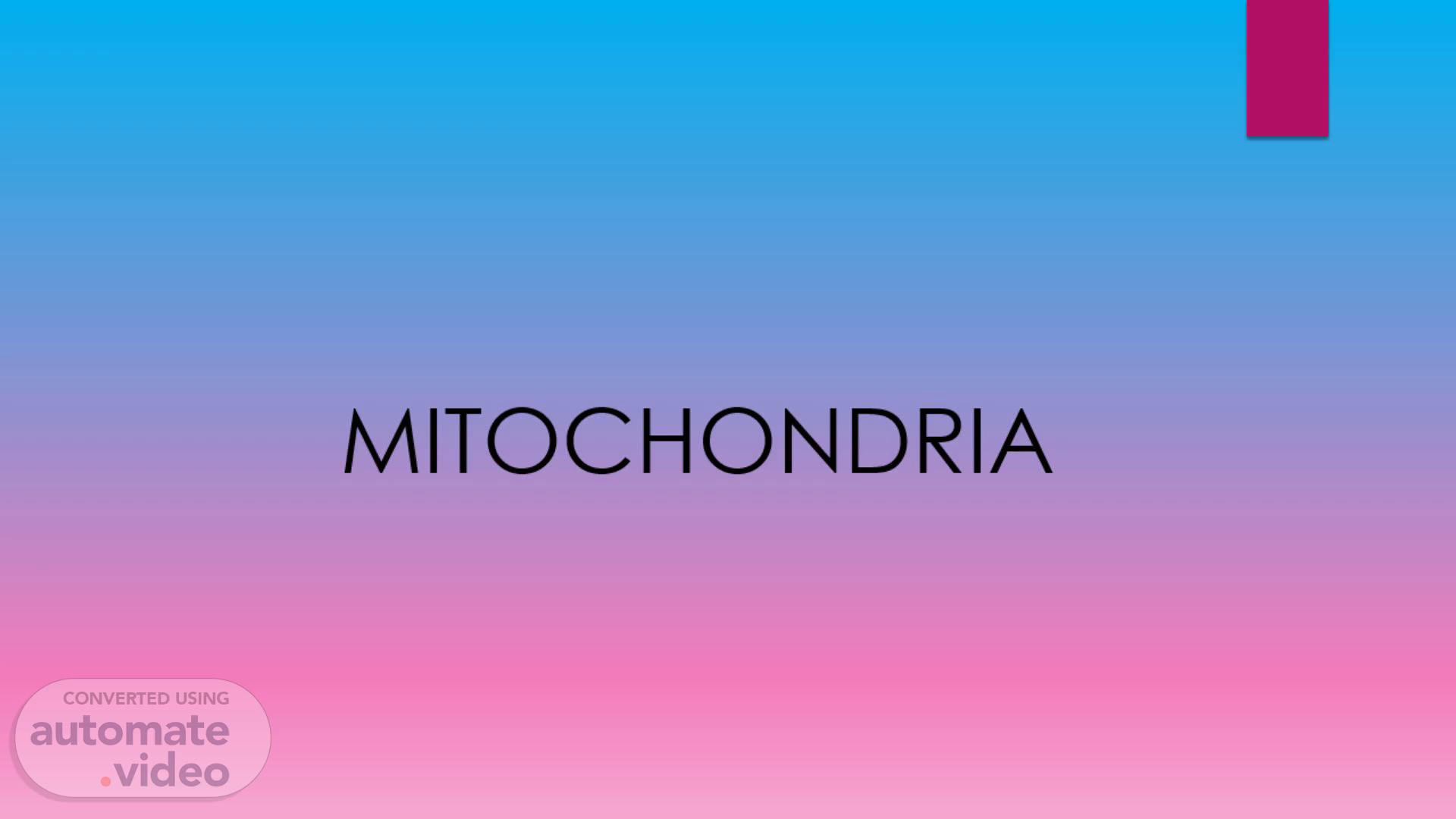Scene 1 (0s)
[Audio] Let us discuss about mitochondria. MITOCHONDRIA.
Scene 2 (5s)
[Audio] The History and Discovery of Mitochondria Mitochondria were first discovered in the mid-19th century, long before their true significance was understood. In 1857, a German biologist named Albert von Kölliker observed tiny thread-like structures within muscle cells. However, it wasn't until the 20th century that scientists began to understand their true function. In the 1940s, researchers like Richard L. M. Giese and Gustav Embden began to recognize the mitochondria as essential components of cellular respiration—the process by which cells extract energy from nutrients. It wasn't until Lynn Margulis proposed the endosymbiotic theory in 1967 that the origins of mitochondria became clearer. According to this theory, mitochondria are the descendants of free-living bacteria that were engulfed by ancestral eukaryotic cells in a symbiotic relationship. This theory was groundbreaking because it explained why mitochondria have their own DNA and replicate independently of the cell's nuclear DNA. Today, mitochondria are recognized not only for their role in energy production but also for their involvement in a wide range of cellular processes. The understanding of mitochondria has grown exponentially, and with it, our appreciation for their complexity and importance..
Scene 3 (1m 32s)
[Audio] Mitochondria, known as the "powerhouses of the cell," are essential organelles responsible for producing energy in the form of ATP through aerobic respiration. S.
Scene 4 (1m 44s)
[Audio] Structure of Mitochondria Mitochondria are double-membraned organelles found in nearly all eukaryotic cells, including those of animals, plants, and fungi. They typically range in size from 0.5 to 10 micrometers and have a unique structure that includes: Outer Membrane: Smooth and permeable to small molecules and ions. Inner Membrane: Highly folded into structures called cristae, which increase the surface area for chemical reactions. Intermembrane Space: The space between the inner and outer membranes. Matrix: The innermost compartment containing enzymes, mitochondrial DNA, and ribosomes..
Scene 5 (2m 26s)
[Audio] Functions of Mitochondria While best-known for producing energy, mitochondria actually serve several important functions within the cell: ATP Production: Mitochondria are the site of oxidative phosphorylation and play a critical role in the production of ATP through the electron transport chain. Calcium Storage: They regulate calcium ion concentrations within the cell, influencing various cellular activities. Programmed Cell Death (Apoptosis): Mitochondria initiate and regulate apoptosis, a process of programmed cell death necessary for the removal of damaged cells. Heat Production: In certain cells, mitochondria generate heat, a process known as thermogenesis. Metabolic Functions: Mitochondria play a role in several metabolic pathways, including the citric acid cycle (Krebs cycle), which is crucial for energy production. Signaling: Mitochondria play roles in hormone, immune, and intercellular signaling..
Scene 6 (3m 36s)
[Audio] Mitochondrial diseases are complex conditions that can significantly impact an individual's health and quality of life. Understanding the causes, symptoms, diagnosis, and treatment options is crucial for effective management. While there is no cure, early intervention and supportive care can make a meaningful difference. This article is for informational purposes only and does not replace professional medical advice. Always consult a healthcare provider for personalized guidance and treatment options..
Scene 7 (4m 9s)
[Audio] Mitochondria are more than just the powerhouses of the cell. They are dynamic organelles involved in a multitude of cellular functions, including energy production, regulation of cell death, calcium balance, heat generation, and even the maintenance of our genetic heritage. They are the unsung heroes of cellular life, working behind the scenes to ensure the proper function of every cell in the body. As scientists continue to unravel the mysteries of mitochondrial biology, we are beginning to appreciate just how critical these organelles are to our health and longevity. From energy production to disease prevention, mitochondria are indispensable for life as we know it. They are not only the engines of the cell but also the guardians of cellular function, making them truly deserving of their place at the center of the biological stage. As we move forward, understanding the role of mitochondria in health and disease will be key to developing new treatments for a variety of conditions, from metabolic disorders to neurodegenerative diseases. The mitochondrion, once thought of simply as an energy producer, has proven itself to be far more than just the powerhouse of the cell—it is the cornerstone of cellular function, health, and life itself..
